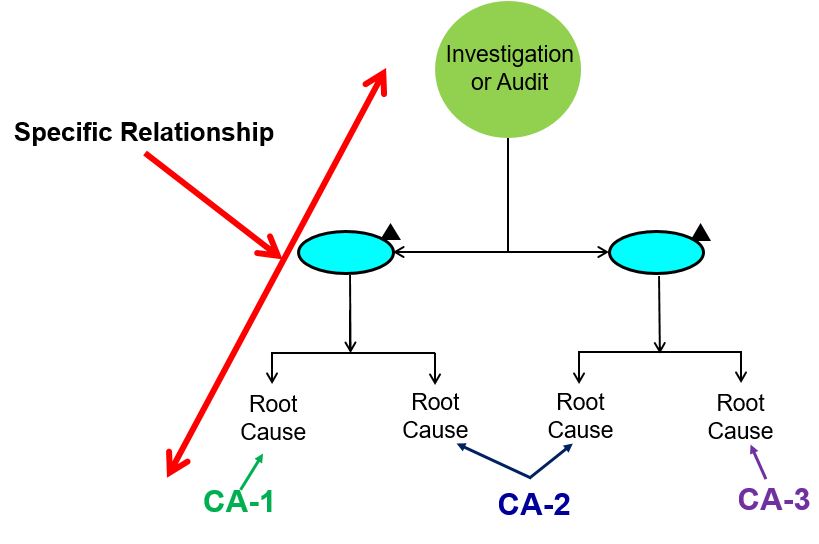When is a Root Cause NOT a Root Cause to a Sentinel Event

So many times when I review Sentinel Event (SE) analyses for companies, I struggle to find the link between a Root Cause and the data on the SnapCharT®. But at the same time, the Corrective Action provided for that cause makes sense to reduce the likelihood of recurrence. This is perplexing as I did not want to say that the analysis was done poorly or was not correct simply because the outcome would probably be a positive one. Then it hit me, many people when going through the Root Cause Tree® were focusing more on the outcome desired than what the data told them.
Our ultimate goal is to fix a problem, reduce risk, and keep our patients, patients’ families and staff safe. To do so we have to present a very coherent, logical argument back to our administration regarding our analysis and findings. I represent this with the following diagram:

The issue that prompted this article relates to how people go through the Root Cause Tree®. As the user gets down to the Root Cause level I begin hearing people making declarations, “We could fix this issue by labeling the medication better” and with that statement the team puts a positive checkmark by Labels NI. What is wrong with this statement and action? Nothing upon first glance if it is true that a better label could prevent recurrence.
Digging deeper, these types of thought processes are actually working in reverse of what we teach. We teach to look at the data on the SnapCharT®, read the definitions to determine if the data supports selecting Labels NI. Based on our teachings we should hear statements such as, “Do I have an evidence (on my SnapCharT®) that tells me that the labeling present at the time of the event contributed to this Causal Factor (and thereby to the Incident)?” Notice that one quote is a question and one is a statement and therein lies a key difference. As we work through the analysis we should be questioning our data versus the definitions and items in the Root Cause Tree® not stating how we could fix the issue. Once we have the Root Cause, we can then work on a Corrective Action to fix the Root Cause.
In conclusion if we choose the Corrective Action first followed by a cause that justifies that action, the investigative team has created a break in that “Specific Relationship” from top to bottom. That break is between the Causal Factor/Root Causes and the data collected on our SnapCharT®. Without data on the SnapCharT® to support the Root Causes you present to your management team, you put your analysis in question. Without belief in the analysis management will be less likely to provide you the resources you need to fix issues and improve performance.
If you would like more information on this or any topic relating to the use of TapRooT® in Healthcare feel free to contact me directly at skompski@taproot.com or at (865) 539-2139.



